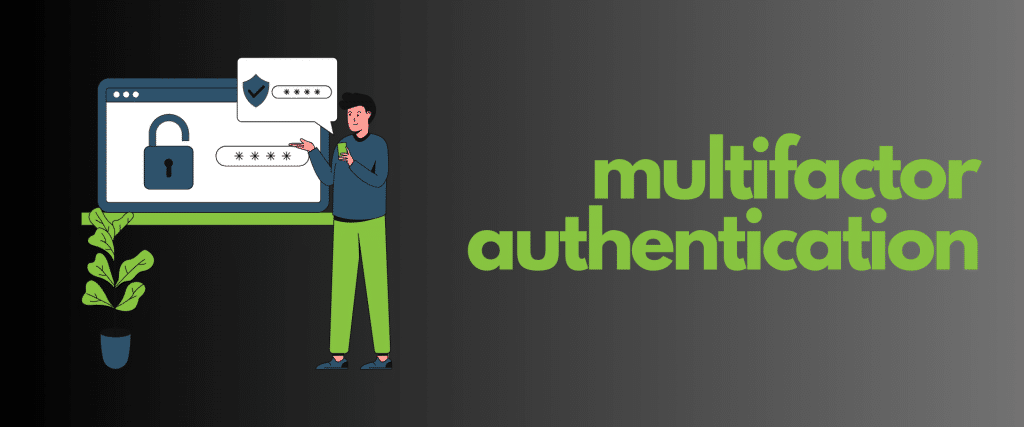
Multi-Factor Authentication (MFA) significantly enhances security by requiring multiple verification methods, but hackers continuously devise methods to circumvent it. Here are five ways they are currently doing so, along with what to watch out for:
- Phishing Attacks: Hackers often use phishing to trick users into revealing their MFA credentials. They may send emails or messages that mimic legitimate sources, asking users to enter their login details, including MFA codes, on a fake website.
- Watch Out For: Be vigilant about unsolicited communications asking for sensitive information. Always verify the authenticity of the request and the website’s URL before entering any data.
- Man-in-the-Middle (MITM) Attacks: In a MITM attack, the hacker intercepts communication between the user and the service. When a user enters their credentials and MFA code, the hacker captures this information and uses it to access the account.
- Watch Out For: Look for signs of website tampering or unexpected certificate warnings in your browser, indicating a potential interception.
- SIM Swapping: This involves hackers convincing a mobile carrier to switch a victim’s phone number to a SIM card in their possession. Once done, they can receive MFA codes sent via SMS.
- Watch Out For: Monitor for unexpected loss of mobile service, which can be an early warning of SIM swapping.
- MFA Fatigue Attacks: Attackers repeatedly trigger MFA requests to a user until, out of frustration or confusion, the user accepts one. This grants the attacker access.
- Watch Out For: Be wary of repeated and unsolicited MFA prompts. Report such incidents to your IT security team immediately.
- Exploiting Account Recovery Processes: Sometimes, the weakest link in security is the account recovery process. Attackers may try to bypass MFA by exploiting less secure account recovery options.
- Watch Out For: Ensure that your account recovery options are as secure as your primary authentication method. Avoid easily guessable security questions.
It’s crucial to educate your team and clients about these methods. Regular training on cybersecurity best practices and staying informed about the latest attack trends are effective ways to mitigate such risks. Additionally, consider implementing advanced security measures like biometric authentication and context-aware access controls, which can offer more robust protection against these types of attacks.
If hackers gain access to a user’s account on Office 365 or Azure, they can potentially add themselves to the list of authorized devices for Multi-Factor Authentication (MFA). This is a critical security concern, especially in cloud environments where sensitive data is often stored.
Here’s how this process might occur:
- Initial Account Compromise: The hacker first needs access to the user’s account. This can be achieved through various methods such as phishing, credential stuffing, or exploiting security vulnerabilities.
- Exploiting Weak MFA Setup: Once inside the account, if MFA is set up but not rigorously enforced or monitored, hackers can exploit this. For instance, if the account is set to trust certain devices or if there is an option to remember the device for future logins, the hacker can use these features to their advantage.
- Accessing Security Settings: Within the compromised account, the hacker can navigate to the security settings where they can manage trusted devices and MFA settings.
- Adding a New Device: The hacker can then attempt to add a new device for MFA. This process typically requires receiving and entering a verification code sent to the user’s already authenticated method (like an SMS to the user’s phone). If the hacker has control over the user’s phone (through methods like SIM swapping) or email, they can intercept these codes.
- Bypassing Alerts and Notifications: Ideally, the user should receive an alert when a new device is added. However, hackers might bypass this by either accessing and deleting these alerts before the user sees them or by initiating the addition at a time when the user is less likely to notice (e.g., late at night).
- Maintaining Persistent Access: Once the hacker has added a new device and authenticated it through MFA, they can maintain persistent access to the account. Even if the user changes their password, the hacker can still access the account through the trusted device.
To mitigate such risks, organizations should:
- Implement strict MFA policies that require approval from an administrator to add new devices.
- Regularly audit and review the list of trusted devices and MFA methods for each user.
- Educate users about the importance of securing their communication channels (like email and phone).
- Use advanced MFA methods such as biometric verification, which are harder to spoof.
- Enable and monitor alerts for unusual activity, such as the addition of new devices.
It’s essential for businesses, especially those in the cloud services domain, to stay vigilant and continuously update their security practices to protect against such sophisticated attacks.
